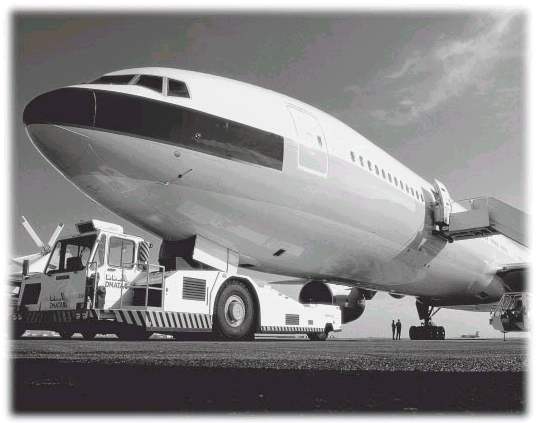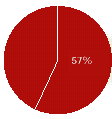|
H
E X C E L M A R K E T S Despite difficult market conditions in the Pacific Rim, build rates rose to a record level in 1998, the second consecutive year of dramatic increases. …We believe commercial aerospace offers significant longer term growth potential. |

Hexcel supplies a range of composite materials for the Airbus A330.
|
Total
1998 Pro Forma Total 1998 Pro Forma Commercial Aerospace Sales: $709 million, or 57% |
THE BOEING 777 takes full advantage of the light weight and high rigidity of Hexcel’s honeycomb for interior and exterior components. |
AIRBUS A340: Hexcel supplies a range of composite materials for the Airbus A340, including prepregs, glass-carbon hybrid sandwich structures with aramid honeycomb core and Redux adhesive films. |
COMMERCIAL AEROSPACE is Hexcel’s largest market, accounting for 57 percent of the company’s total 1998 pro forma sales. The commercial aerospace industry has historically led the development of new applications for advanced structural materials because it values their unique performance qualities and can maximize the economic benefits from their use. In fact, the use of advanced structural materials expands with each new generation of aircraft.
E q u a l l y W e l l P o s i t i o n e d
Hexcel is a leading supplier of reinforcement products, composite materials and parts to Boeing and Airbus, the industry’s two largest manufacturers and Hexcel’s two largest customers.
Hexcel is well positioned with both Airbus and Boeing. Hexcel also supplies virtually every other maker of commercial aircraft in the western world, including builders of regional and business aircraft.
During 1998 Hexcel Interiors developed and patented a new retrofit kit for the “ATIX” stowage bin to modify overhead stowage bins to allow stowage of four carryon bags, rather than the usual two. This is an exciting new product for both us and the airplane traveler. Hexcel has contracts with United Airlines and Continental Airlines to retrofit “ATIX” stowage bins on all Boeing 737 narrow-bodied aircraft in their fleets and thereby provide more carryon space for passengers. With Hexcel’s kits, the bins can be retrofitted overnight, compared with 5-10 days to install standard stowage bins.
C h a n g e U n d e r w a y
Change is underway at both of the world’s largest aircraft manufacturers. Boeing has been affected by cancellations and delays from Pacific Rim nations, among other factors, and has heightened its focus on value engineering and streamlined processes. Airbus continues to expand production, and plans to convert from a loosely connected consortium to a more tightly structured multinational corporation. Both Airbus and Boeing are focused on managing production rates and maintaining profitability in the face of a competitive battle for market share in commercial aerospace.
These changes all have implications for Hexcel, and we have launched a major effort to focus more directly on the changing needs of our customers, and specifically Airbus and Boeing. The trend towards supply chain management at both Airbus and Boeing impacts all their suppliers, including Hexcel. To remain competitive and profitable, Hexcel must continue to improve efficiencies and reduce total costs. Thus, Hexcel is intensifying its Lean Enterprise initiatives and the other change initiatives discussed in this report to pull costs out of the manufacturing process, improve productivity and enhance customer satisfaction.
I n d u s t r y O u t l o o k
Despite difficult market conditions in the Pacific Rim, commercial aerospace build rates rose to a record level in 1998, the second consecutive year of dramatic increases. We believe commercial aerospace offers significant longer term growth potential. The current global fleet with more than 100 seats is over 10,000 aircraft. Based on announced build rates for Airbus and Boeing, anticipated market growth and replacement of older aircraft should mean at least 700 new aircraft built annually for the next several years. This compares with a record 788 aircraft in 1998 and 380 in 1995, the low point of the previous cycle.
For Hexcel, our global reach and customer balance will allow us to benefit no matter where the demand for new aircraft originates, and to capitalize on the inevitable upsurge of aircraft orders once Asia returns to economic health.
 GULFSTREAM IV: Using carbon fiber epoxy/resin/ honeycomb panels, Hexcel Structures manufactures engine cowl doors for the Rolls-Royce Tay engine, which is used on the Gulfstream IV and Fokker F-100 aircraft. |
 THE EUROCOPTER EC 135 has a fully shrouded fan and tail boom built with Hexcel’s self-adhesive, self-extinguishing prepreg with a carbon glass hybrid woven reinforcement. |
 RADOMES: Hexcel Structures produces radomes for Boeing 737, 747 and 757 aircraft. The radome, located at the nose of the aircraft, protects aircraft radar equipment while providing an aerodynamic surface. |
 ATIX KITS: Hexcel Interiors has developed a unique solution to modify storage bins to accommodate carryon bags on narrow-bodied aircraft. Installation can be accomplished overnight, and the aircraft returned to service the next day. |


